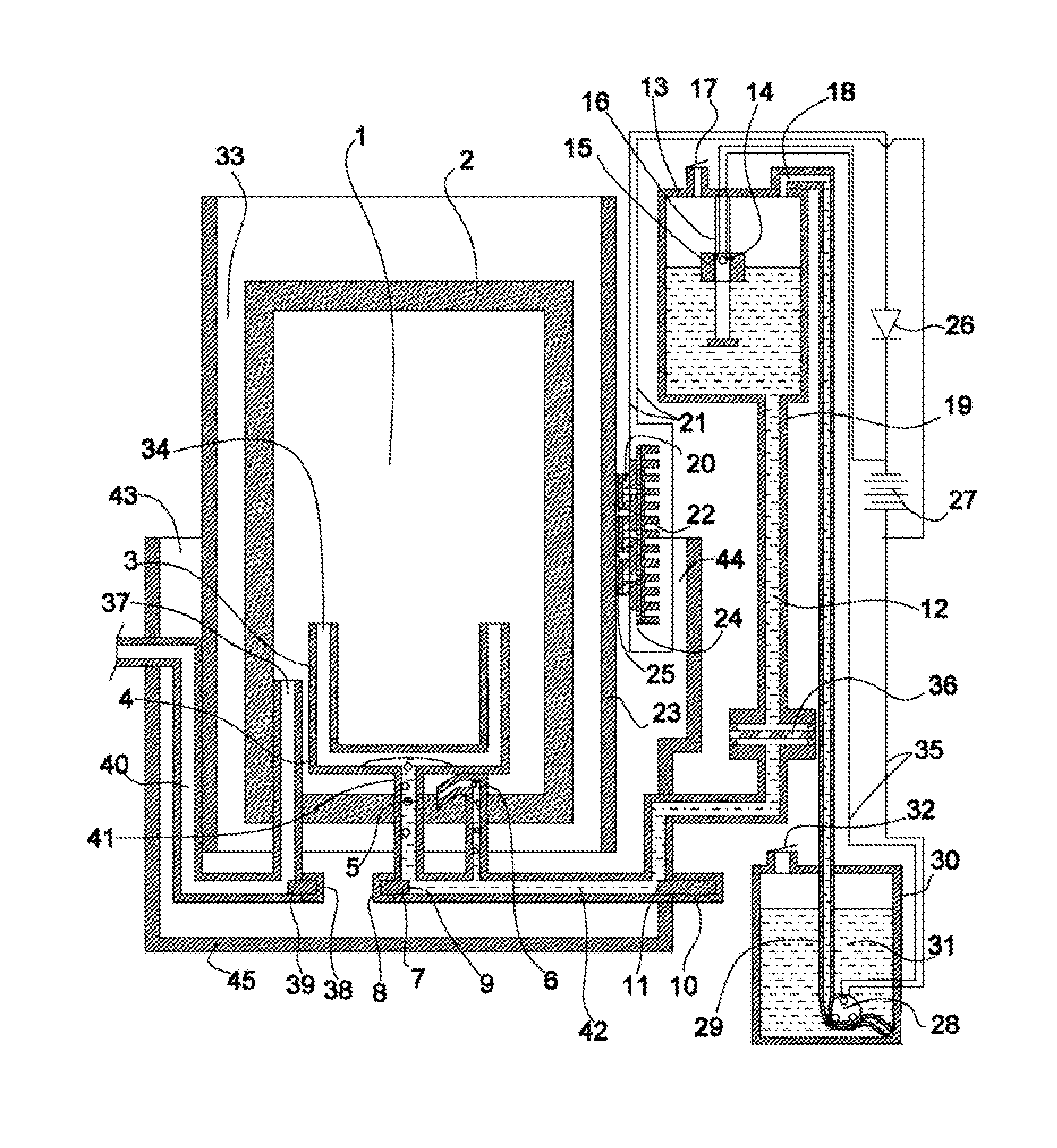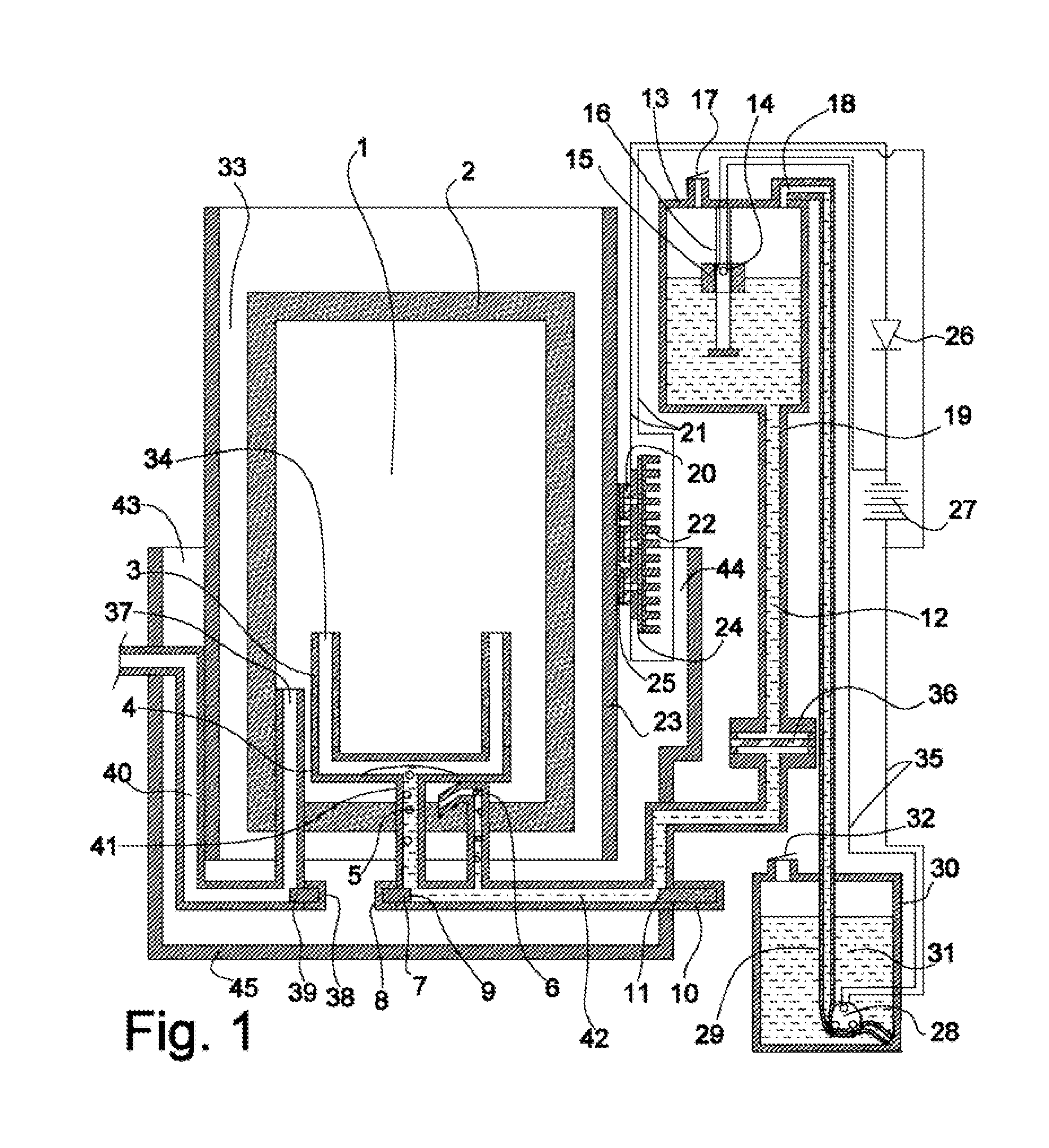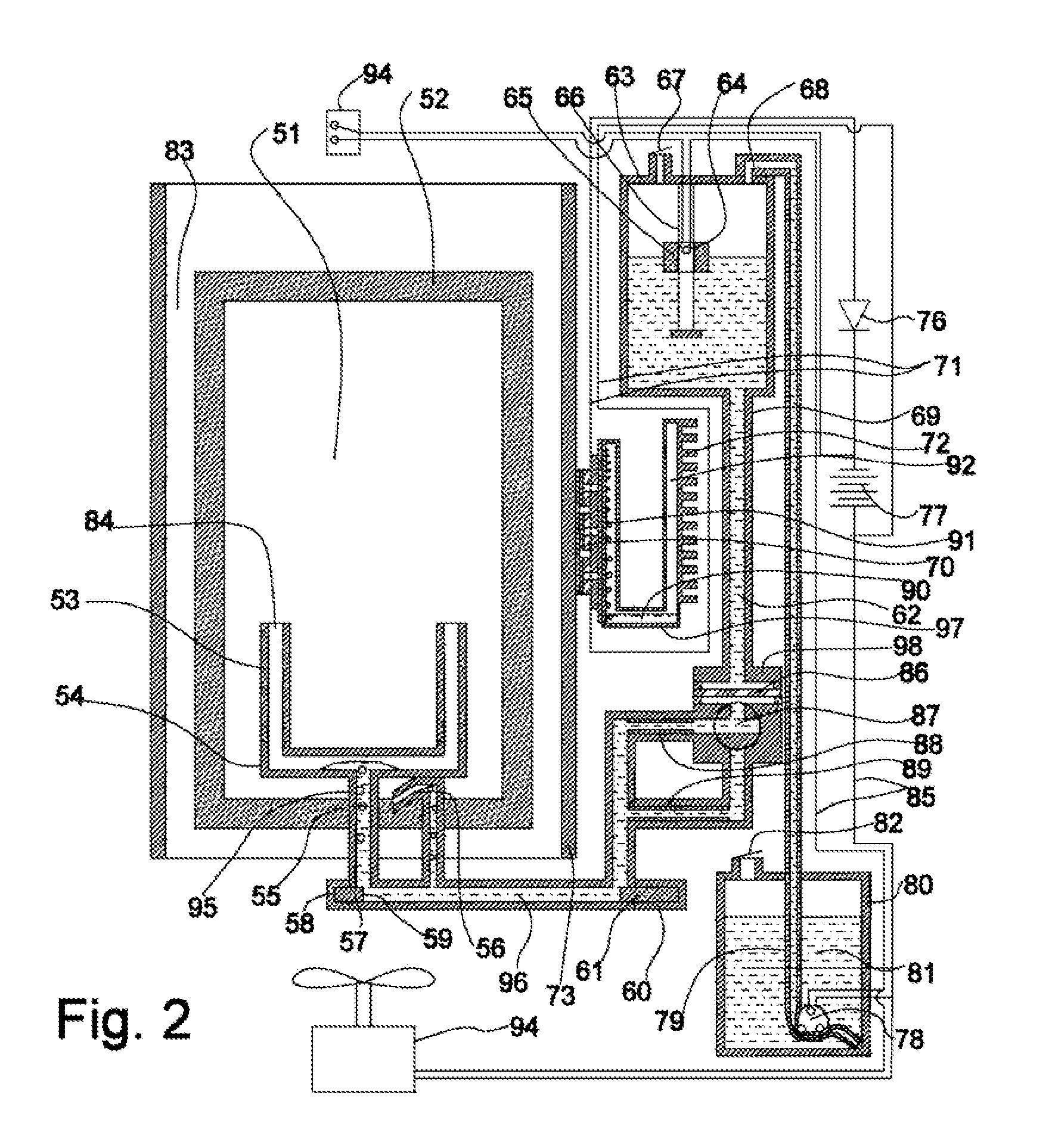Jet Cavity Catalytic Heater
a heater and jet cavity technology, applied in the field of catalytic heating systems, can solve the problems of burner fatigue, heater rupture, fuel and air burning unsteady and explosively,
- Summary
- Abstract
- Description
- Claims
- Application Information
AI Technical Summary
Benefits of technology
Problems solved by technology
Method used
Image
Examples
Embodiment Construction
[0129]FIG. 1 is a cross sectional view of a jet cavity heater and fueling system according to an exemplary embodiment of the present invention. In this exemplary embodiment, the major components include a catalytic burner, a fuel distribution system, a flow control system, and a fuel tank system.
[0130]The illustrated catalytic burner has a catalytic bed 2 surrounding a catalytic bed cavity 1, and a chimney 23. The fuel distribution system is comprised of a porous tube 3, compression fittings 4, one or more small capillary tubes 6, and a gas inlet nozzle 37. The flow control system is comprised of a valve seal 9, a wax actuator and valve seat 11, and a fuel filter 36. The fuel tank system is illustrated as being comprised of a fuel line 12, a gravity feed tank 13, an inlet line 18, a peristaltic pump 28, and fuel tubing 29. There may also be one or more electrical wires 35 to the peristaltic pump 28, thermopile 20, and an electrical energy supply 27, preferably in the form of a recha...
PUM
| Property | Measurement | Unit |
|---|---|---|
| Temperature | aaaaa | aaaaa |
| Diameter | aaaaa | aaaaa |
| Length | aaaaa | aaaaa |
Abstract
Description
Claims
Application Information
 Login to View More
Login to View More - R&D
- Intellectual Property
- Life Sciences
- Materials
- Tech Scout
- Unparalleled Data Quality
- Higher Quality Content
- 60% Fewer Hallucinations
Browse by: Latest US Patents, China's latest patents, Technical Efficacy Thesaurus, Application Domain, Technology Topic, Popular Technical Reports.
© 2025 PatSnap. All rights reserved.Legal|Privacy policy|Modern Slavery Act Transparency Statement|Sitemap|About US| Contact US: help@patsnap.com



